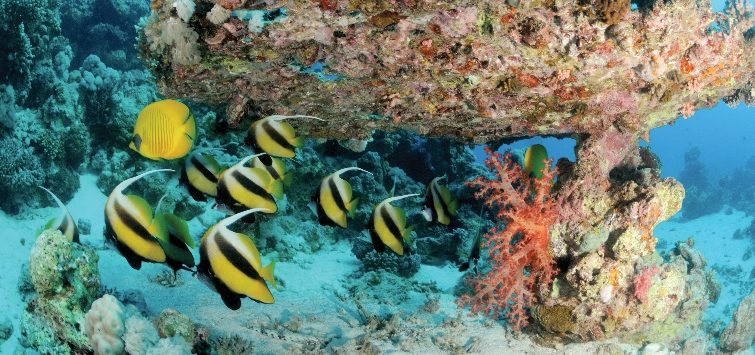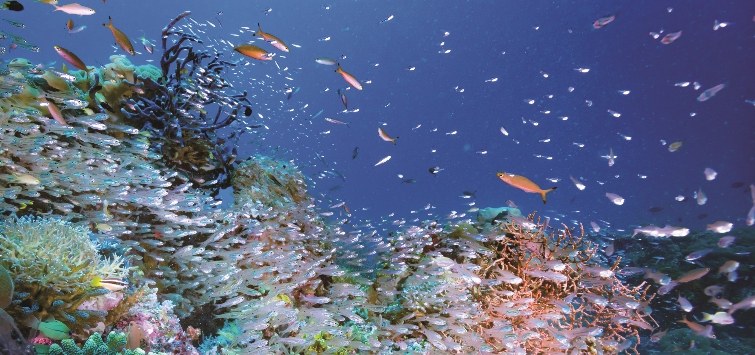Anatomy of a Coral Reef Ecosystem
In this article I hope to share with you a “rough sketch” of some of the various connected habitats and ecologies that allow wild coral reefs to prosper, with some lessons that perhaps can be applied to making our own reef tanks closer to the coral, fish, and invert habitats they are modeled after.
The Beach
Let’s start at the first area one encounters as we begin the journey from land to reef: the tropical beach. A beach can give clues to the nature of the reefs that lie further out to sea. The creatures that occupy a beach also have a link to their counterparts farther out from the shore.Walk on any tropical shoreline and you will see the tracks of hermits and other crabs, and like the cleanup crew in aquaria, these chaps are often dealing with waste materials, performing a valuable role in processing nutrients and allowing them to move between habitats.
Silty Shores and Estuaries
Estuaries pose a problem for coral reef ecosystems. When rivers and streams meet the sea, they bring with them an awful lot of sediment, nutrients, and pollution they’ve picked up along the way. Thankfully, we have mangroves. Only recently have we realized the value of mangroves; not only do they trap sediment and protect coasts from storms and erosion, but they also provide shelter for the multitude of species that find their way onto reefs.Mangroves are masters of brackish and fully marine conditions. They use a variety of techniques to deal with salt. Some exude salt from their roots in a process analogous to reverse osmosis, others secrete salt through leaf pores, allowing it to be washed away by rain, and others “pump” salt into old leaves, which are then shed.
Simply put, mangroves are quite marvelous, and can make a wonderful addition as functional emergent displays in marine and even reef aquaria, or as utilitarian additions to hidden sumps.
Rocky Shorelines
The rocky shores of the intertidal zone are tough places that are regularly inundated with saltwater and baked in the hot sun, so the water’s salinity can rise to life-threatening levels. But those same rocky shores can also be very productive places. Nutrient levels can be high, and the tropical sun can allow algae to prosper. While some fish manage to reach this zone at high tide, the bulk of the grazers are snails and crustaceans.Not every coastline has shallows, but where geography allows them to form, the substrate present ranges from fine sand to a coarser coral rubble, often giving way to a sandy-bottomed lagoon structure, which in turn gives way to the back reef. In some regions, dense meadows of sea grass and algae can form, creating rich ecologies that are much more complex than they at first appear.
If present, these habitats are tremendously important to the reef, and the complex mixture of algae species and sea grasses often presents natural mechanisms to trap sediment and produce plant matter that, when washed seaward, is an important food source for herbivores.
On one reef, I watched groups of sohal tangs (Acanthurus sohal) venture into the shallow water to feed as soon as the tide allowed. This is also a habitat that demonstrates the role of that other great member of the cleanup crew, the brittlestar. As the sun sets, brittlestars emerge in huge numbers out of crevices and from under rocks.
Much of the biological activity in these complicated habitats occurs beneath the substrate. Bivalves filter sea water, annelid worms tunnel through the substrate, and anoxic zones under the sand surface allow anaerobic bacteria to thrive.
Some coral reef crests experience such variation in tides that corals are fully exposed. I often found it hard to imagine how what appear to be delicate creatures can survive with regular exposure to the air, even though I understand how the pigments in their tissues and mucus production enable their survival.
Types of Coral Reefs
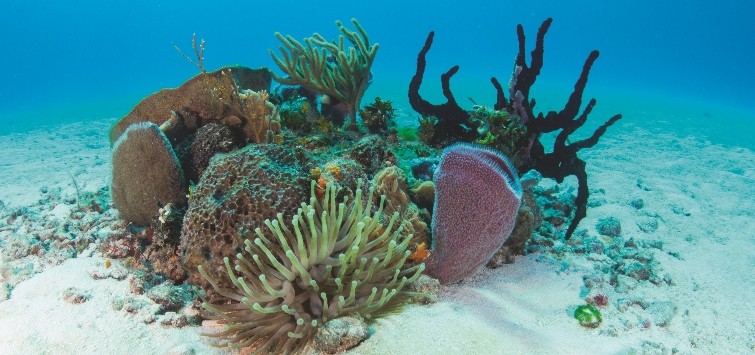
Atolls are usually ring-shaped and, with a few rare exceptions, are found in the Indo-Pacific. Barrier reefs and fringing reefs tend to merge into each other (in terms of definition and structure) and are formed by the same processes. Yet, barrier reefs tend to be much more substantial and significantly farther away from land, whereas fringing reefs are close to or merge with the shore.
The largest barrier reef is, of course, the Great Barrier Reef off Australia’s northeastern shore, and the second largest is the Mesoamerican Barrier Reef, which stretches from Mexico’s Yucatan Peninsula to Belize.
It is these places that we see in our mind’s eye when we think of reefs: rich coral gardens in well-lit, clear waters, replete with fishes of every hue. This is where the reef grows most quickly and coral growth is most vigorous. It is this habitat that perhaps more than any other controls the overall reef dynamics.
I think we all understand how corals form the basic structure of reefs. However, it is worth noting that it is not just the reef-building (hermatypic) corals that are turning dissolved calcium and carbon dioxide into rocky structures that can persist for eons. A great number of other animal and even some algal species, from conches to cowries and hydrozoans to Halimeda, are contributing to reef formation by adding their skeletons, internal structures, and wastes.
Anything that doesn’t dissolve eventually becomes part of the reef, from sea urchin spines to tridacnid shells. Coral reefs are made up of the remains of countless different types of organisms, and when these dead components pile up, they end up stuck together, driving the formation of a reef.
Reefs on the Move
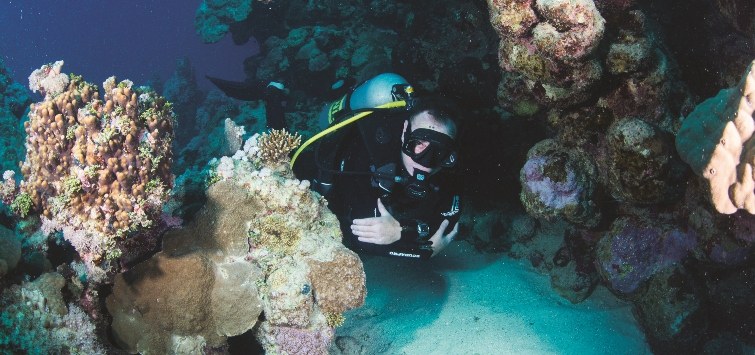
Despite their almost infinitely varied nature, all types of coral reefs share the fact that, as they grow, a maze of shallow channels will become overgrown. A series of pinnacles will eventually fall or merge. It’s easy to think of coral reef ecosystems as static environments that grow a few millimeters a year, but this is clearly untrue. We know that corals can grow relatively rapidly. Reefs are always “on the move.”
As you might expect, the bulk of reef creation occurs where energy levels are highest, within the top 20 meters or so of the reef. Colonies can be quite large, particularly tabulate Acropora. These become overgrown with other species and, perhaps during storms, fall onto the reef below. Colonies might only fall a short distance, but whenever a chunk falls, it creates opportunities for colonization, like an old tree falling in the forest.
The reef is constantly moving and forming new ecological niches at a rate humans might not easily observe, but it is happening. It is this constant change on a small scale that means coral reef ecosystems exhibit high biodiversity, yet in a wonderful irony, stay very stable at a macroscale.
A Little Deeper
Below the “busy” level of the reef, life tends to be a little less hectic, with reef walls and slopes supporting fewer light-dependent coral species as depth increases. This transition is quite fascinating; as the light level drops, sponges become more common, as do sea whips, sea fans, and gorgonians.Again, there is no hard and fast rule here, as reefs at depth are incredibly varied depending on location, currents, and water temperature, and depending on local geography, the reef could give way to a rubble zone or continue (especially in the case of atolls away from the continental shelf) to the low-oxygen, low-light depths.
Rubble Zones
Rubble zones are tremendously important habitats, yet they are regularly overlooked by divers and ignored as inspiration for aquascaping. Yet, the rubble zone can be seen as the foundation of the reef. As the rubble rains down, it piles up and becomes a solid mass, marching seaward and eventually providing a platform for new growth above.The rubble zone offers a great opportunity for many fish and crustacean species to hunt and form territories. The upper layer of the rubble is very open, and while it is subject to movement, it provides shelter for many small fish and grazing opportunities for others.
Coral Caves and Sandy Bottoms Caves
Not all caves are created equally. Sea level changes mean that quite a few caves, once formed by fresh water running through limestone, are now below sea level. Swimming past stalactites is quite an experience. Caves within reefs, formed as reefs grow, are very common. Oftentimes, channels in the reef are covered by overgrowth of coral to form caves that can be “scoured” by surge and current.
Sandy Bottoms
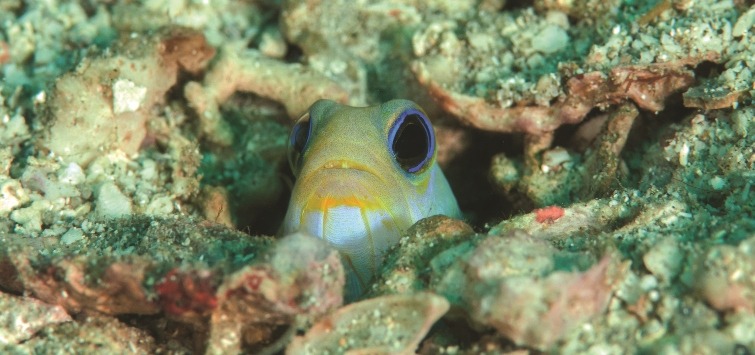
Some species resemble debris, leaves, or pieces of weed. Any exploration of the seahorse and pipefish clan will reveal fish living on sandy bottoms, occasionally in the company of sea grasses and algae, that are masters of disguise. My favorite, though, are leaf fish.
There are a few fish that lead successful lives not on, but within, the substrate. As a photographer, I really enjoy jawfish. These characterful fish live in burrows, within a well-defended territory. When conditions are suitable, areas of sea floor can host dozens of individuals. They make for quite amiable subjects.
Boulders and Sand
Small and isolated pieces of reef that have fallen and made it past the rubble zone offer inspiration for minimalist aquascaping. I’m not sure they’d feature in a marine biology textbook as a “true” habitat, but they are intriguing. They may bring corals with them, but more likely, they have been colonized in situ. Similar structures are formed when sand overwhelms rocky areas. Both create reefs in miniature that are extremely engaging.Understanding Wild Reefs
I hope I have passed along some of my passion for wild reefs, as well as contributed to an appreciation of the complex structures and diverse habitats that they comprise. An understanding of how coral reef ecosystems are created, and how they function, is critical to giving our own reef aquariums the best chance to prosper. And on larger scale, this knowledge is also vital for valuing—and protecting—reefs in the wild.

.png?h=595&iar=0&w=2781&hash=5FD5E69473BCC22199FBFA2FB71B6033)
